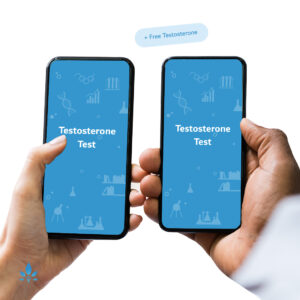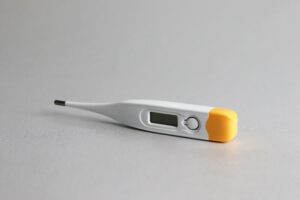Gynoid Fat (Hip Fat and Thigh Fat): Possible Role in Fertility


- Gynoid fat is distributed at the top of the thighs and on the hips.
- Android fat is distributed on the belly.
- The female sex hormone oestrogen stimulates hip fat and thigh fat (gynoid) and the male sex hormone testosterone stimulates belly fat (android, around the abdomen).
- There is no conclusive data to suggest that having more (or less) gynoid fat contributes to fertility.
Women have been judged on their appearance since ancestral times. Those who carry their weight around their hips, breasts and thighs, have long been considered to be more attractive than those who are more ‘apple-shaped’ and carry their weight around the upper half of their body.
Changing body shapes
The distribution of body fat varies by age, gender and inheritance. In childhood, males and females have a similar body shape, but with the arrival of puberty comes an influx of sex hormones, which play a role in determining where fat will be stored over the reproductive years.
Oestrogen is the predominant female sex hormone. It inhibits fat deposition in the abdominal region and stimulates fat deposition around the hips and thighs (the gluteofemoral region). Testosterone is the main male sex hormone. It stimulates fat deposition around the abdomen and inhibits fat build up around the gluteofemoral region. Women with PCOS often have reduced oestrogen and higher circulating androgens (including testosterone); they also frequently present with male-like fat distribution.
Fat that is stored around the hips, breasts and thighs after puberty is known as gynoid fat. The fat that accumulates around the abdomen is known as android fat.
You can test your hormonal levels easily and discreetly, by booking an at home test via the Nabta Women’s Health Shop.
Waist to Hip Ratio (WHR)
The WHR is calculated by dividing waist measurement by hip measurement. For example, a person with an 80 cm waist (31.5 inches) and 95 cm hips (37.4 inches) has a waist-hip ratio of about 0.84.
The distribution of gynoid body fat is measured using WHR. Typically, during the reproductive years, the ratio is lower in females than in males:
- Healthy, premenopausal women: 0.67 – 0.80
- Healthy men: 0.85 – 0.95
After the menopause, a woman’s WHR will often increase and her body fat distribution will more closely resemble that of a normal male. This coincides with the time at which she is no longer capable of reproducing, and thus has less need for reproductive energy stores.
WHR is unique in that it is the only body feature that serves as a reliable marker of a female’s age and general health. It may also provide information on her overall reproductive status.
The benefits of having a low WHR….
Women with a low WHR have a reduced risk of heart disease, type 2 diabetes, and various cancers. They typically have fewer mental health issues and are less likely to experience depression. Maintaining a low WHR (ensuring a proportion of gynoid fat remains) after the menopause can also help to protect against cognitive decline.
From a reproductive perspective, the evidence is conflicting. Whilst some studies suggest that a low WHR correlates with more regular menstrual cycles, and a healthy supply of oestrogen and progesterone during ovulation, indicating improved fecundity. Other researchers argue that studies on non-obese, younger women are lacking; and, instead suggest, that the proposed detrimental effects of a high WHR on fecundity could be secondary to advancing age and high BMI, which are both known to adversely affect female fertility. In fact, to complicate matters further, women with low WHRs will often also have low BMIs, which can contribute to difficulties in conceiving.
One study has suggested that women with a low WHR might have a cervical/uterine environment that is favourable to sperm penetration, however, further work is necessary to validate this finding. Interestingly, an additional study has shown that all women who have regular ovulatory cycles will experience a reduction in their WHR when they are at the most fertile stage. However, these results should be interpreted with caution, as other studies have failed to replicate the results.
Probably the only thing that can be stated with certainty at this time is that many males are programmed to seek out a mate with a low WHR. The ‘fertility hypothesis’, suggesting that a low WHR correlates with improved fertility, has garnered significant interest over the previous three decades; however, empirical evidence is lacking and studies to date present contradictory findings. You can track your period and ovulation cycle using the Nabta app to understand your body better and learn how your health is impacted by your body shape.
….and why gynoid fat puts you at an evolutionary advantage
Women with more gynoid fat and a lower WHR are considered more attractive. This is a fact that is ‘programmed’ into our subconscious and probably goes back in time to our ancestors. These women will find it easier to find a mate, they will then find that their bodies are primed for reproduction and pregnancy. Women with a low WHR will also generally have fewer health issues. The consequences of this for their offspring are that they pass on fewer heritable health problems, meaning that their children also have fewer health complaints.
Fashions change over time and with it, our perception of the ‘ideal’ body shape. However, the appeal of the hourglass body shape remains, perhaps because intrinsically it puts us at a biological advantage and indicates that we are not only capable of reproduction, but likely to produce strong, healthy offspring.
Sources:
- Bovet, Jeanne. “Evolutionary Theories and Mens Preferences for Womens Waist-to-Hip Ratio: Which Hypotheses Remain? A Systematic Review.” Frontiers in Psychology, vol. 10, 4 June 2019, p. 1221., doi:10.3389/fpsyg.2019.01221.
- Forte, R, et al. “The Body Fat-Cognition Relationship in Healthy Older Individuals: Does Gynoid vs Android Distribution Matter?” The Journal of Nutrition, Health & Aging, vol. 21, no. 3, 2017, pp. 284–291., doi:10.1007/s12603-016-0783-1.
- Jasieńska, G, et al. “Large Breasts and Narrow Waists Indicate High Reproductive Potential in Women.” Proceedings, Biological Sciences, vol. 271, no. 1545, 22 June 2004, pp. 1213–1217., doi:10.1098/rspb.2004.2712.
- Jenkins, Julian M., et al. “Endocervical Mucus PH Is Inversely Related to Serum Androgen Levels and Waist to Hip Ratio**Supported in Part by the Infertility Research Trust, University of Sheffield, Sheffield, United Kingdom.” Fertility and Sterility, vol. 63, no. 5, May 1995, pp. 1005–1008., doi:10.1016/s0015-0282(16)57538-4.
- Kirchengast, S, and M Gartner. “Changes in Fat Distribution (WHR) and Body Weight across the Menstrual Cycle.” Collegium Antropologicum, vol. 26, Dec. 2002, pp. S47–S57.
- Lassek, William D., and Steven J. C. Gaulin. “Do the Low WHRs and BMIs Judged Most Attractive Indicate Higher Fertility?” Evolutionary Psychology, vol. 16, no. 4, Oct-Dec 2018, doi:10.1177/1474704918800063.
- Morán, Carlos, et al. “Upper Body Obesity and Hyperinsulinemia Are Associated with Anovulation.” Gynecologic and Obstetric Investigation, vol. 47, no. 1, 1999, pp. 1–5., doi:10.1159/000010052.
- Singh, D, and D Singh. “Role of Body Fat and Body Shape on Judgment of Female Health and Attractiveness: An Evolutionary Perspective .” Psychological Topics, vol. 15, 2006, pp. 331–350., core.ac.uk/download/pdf/25857452.pdf.













































